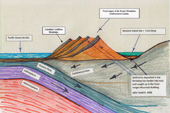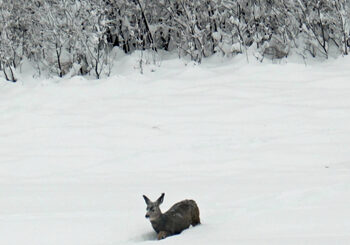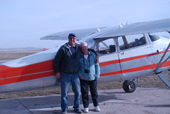Larger Mammals. Rocky Mountain Biosphere. Part 5.
An Introduction, meet some of the larger animals.
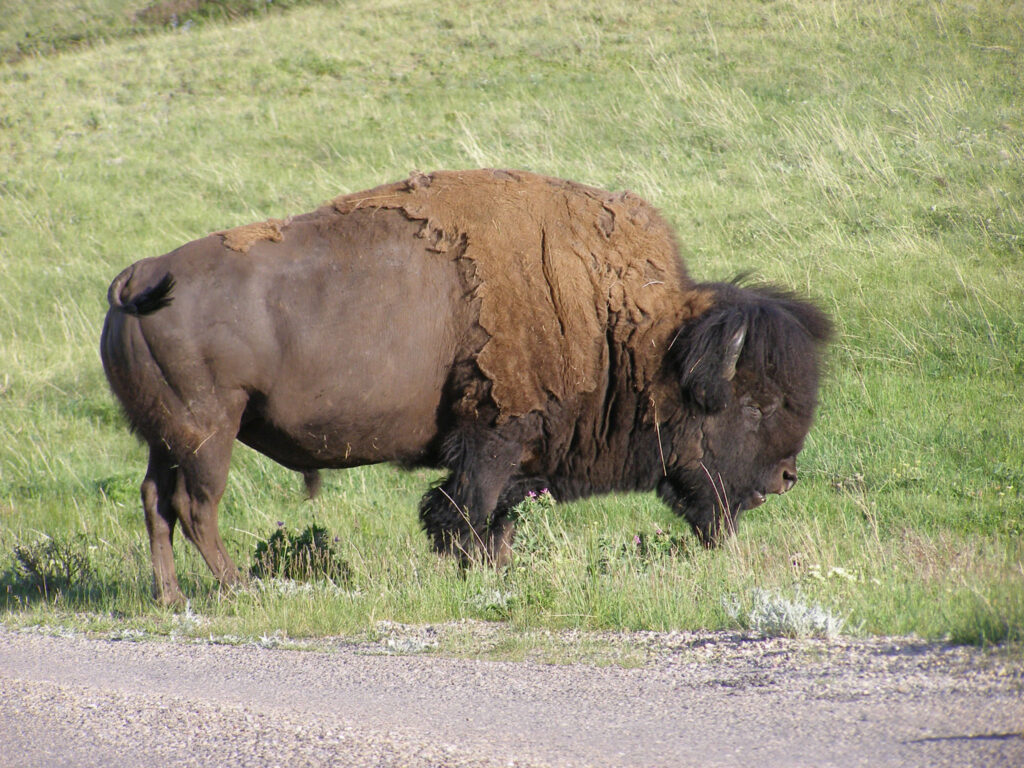
American bison, (Bison bison),
First and foremost we visit the American Bison, sadly now confined as a semi-domestic mammal. This fine specimen is cared for by the Waterton Lakes National Peace Park, a place well worth visiting. Bison as you know roamed these slopes and grasslands in their millions, not so long ago.
It is believed that we now have about 33,000 bison in captivity or ranged in a park somewhere, The original population exceed some 70 million animals. Yet this vast herd was reduced down to 541 individuals, Wikipedia tells me. A small herd that Kathleen and I like to visit is the Bison paddock at Waterton Park, where one can drive around a given circuit to view the animals.
I love the wallows these animals make. A wallow is made by the bison scratching its back in the soil forming a shallow depression. By rolling over on its back it is able to coat itself with mud and dirt this may help in keeping cool, shedding old skin and hair, and removing parasites.
Photo by Lois Everett.
The Rocky Mountain elk (Cervus canadensis nelsoni).
November is a good month to see the herds of elk, sometimes 200 induvial strong. Elk Display altitude migration from the alpine regions down to the montane and foothills. While at these lower regions you may see them stripping off the bark of Aspen trunks, or you will observe this sign in the winter months. One sound never to be forgotten is that of the bugling of a mature male elk during the rut season. It is our 2nd largest mammal after the Moose.
Talking about the Elk stripping off Aspen bark their upper canine teeth that have no apparent purpose nowadays, maybe a relic from the past. These teeth are rounded and smooth which makes them attractive to the jewel trade.
The female Elk will hide their calves for about two weeks or more after they are born. The calves are very stationary during this period remaining concealed as a defense against predators. Later, the mother and offspring are the main herd in the summer range.
Photo by Lois Everett.
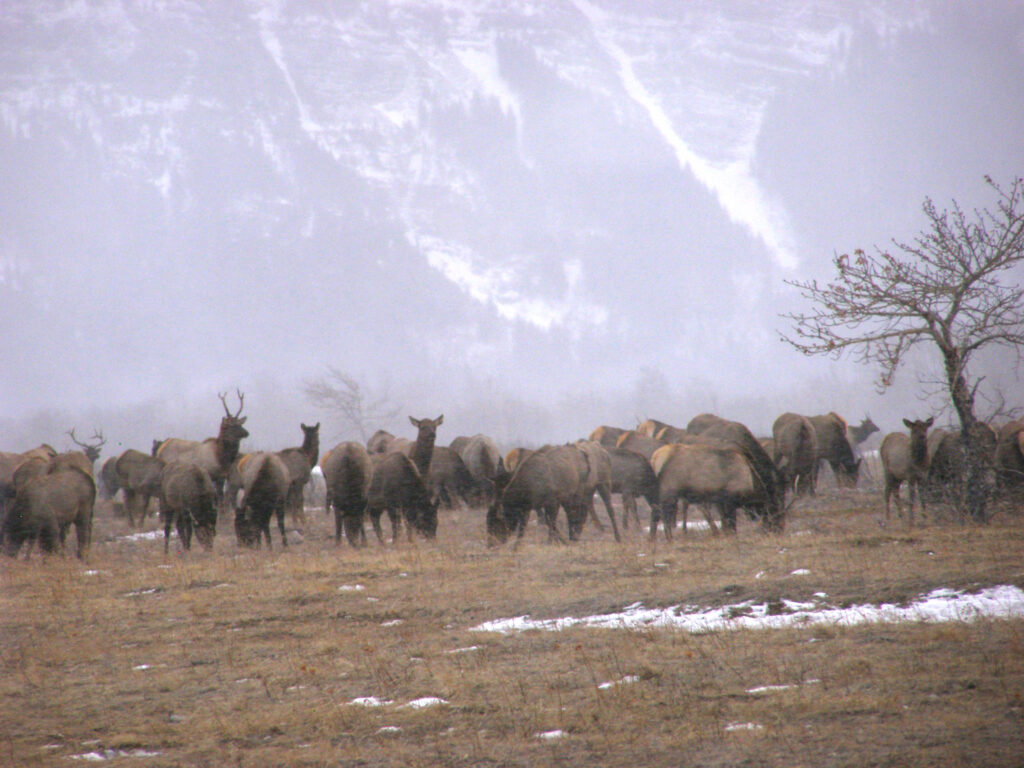
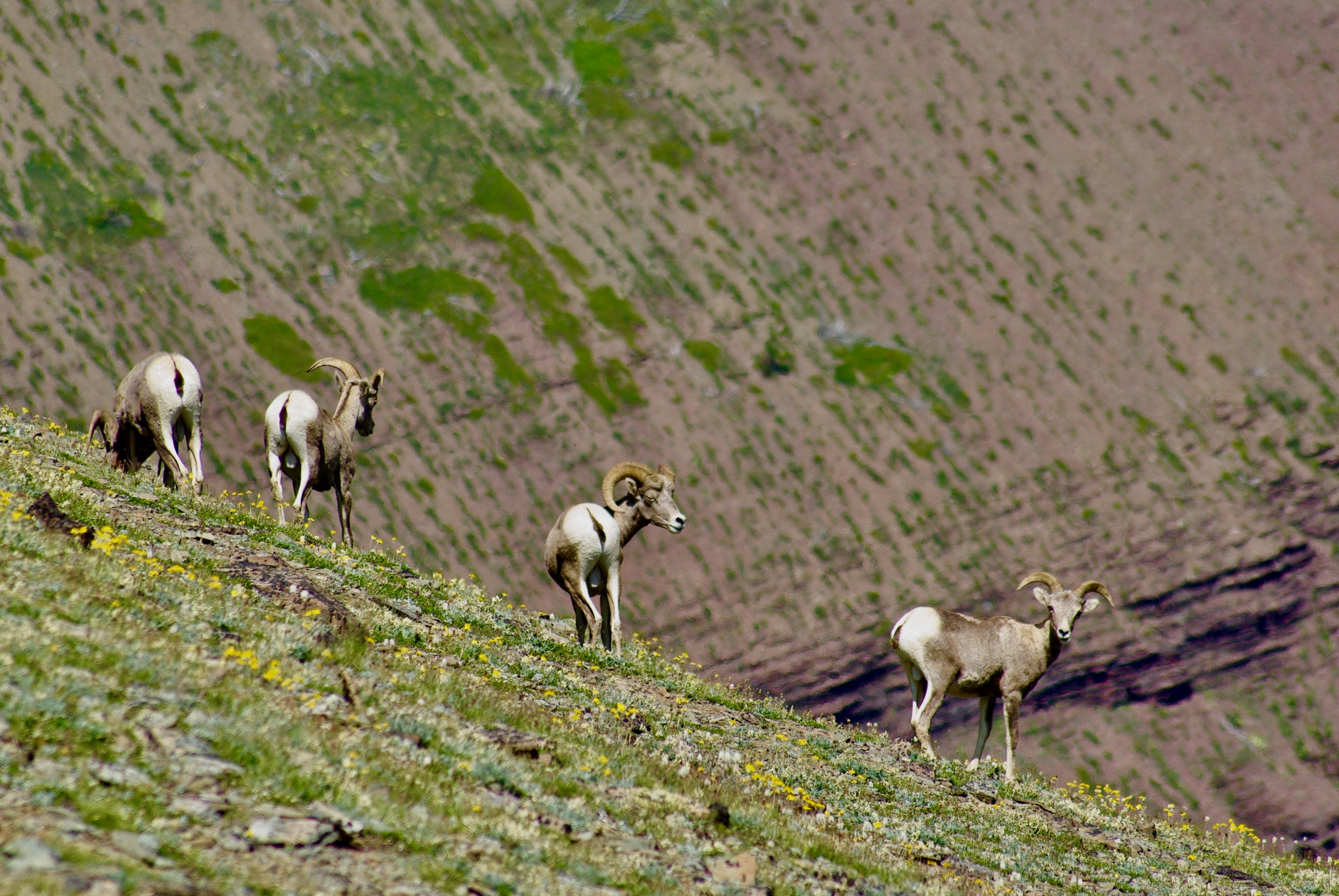
The bighorn sheep (Ovis canadensis).
The Rocky Mountain Bighorn Sheep Ovis canadensis is the provincial mammal of Alberta.
The summer months are a good time to watch these magnificent animals as often they come down to the sub-alpine meadows to graze. Rocky Mountain bighorn sheep have a complex four-chamber stomach, as ruminants. Once they have eaten, their fill they will retreat to the high ground to rechew and rechew their food, this gives the gut bacteria a chance to digest the cellulose in the plant material. This process also absorbs and retains the plants’ moisture enabling the sheep to go long periods without the need to search for water.
The attraction of the ram is its enormous horns which can weigh up to 300 lbs and grow over three feet long, in a curve. Battles between two rival rams involve running towards one another at speeds approaching 40 miles per hour, when close enough will stand on their hind legs and crash their heads together. The sound of which can be heard a mile away.
I can’t help thinking that the ram with the high ground has the advantage. Sometimes these fights can go on all day. This rut season can be hard on the skull which is re-enforced with a bony septum along with enlarged cornual of the brain and the frontal sinuses, the horns themselves have hard cores. The force of two rams colliding generates a force of sixty than required to crack a human skull. These massive horns are not shed as with the deer and are made up of keratin just like our fingernails. Yearly annuli ring on the horn is added increasing their growth.
Photo by Joyce Taylor.
Much of the data above came from Wikipedia, the free encyclopedia.
When Picnicking, Camping, or Hiking in Bear country ‘Be Aware of Bears’.
The question is, do bears stay away from people? No, they cannot, with the hikers entering all the wild places, they can’t stay away from us. In my experience, the worst situation is when approaching a blind bend in the trail and suddenly being confronted by a female bear with cubs. Your only defense is a bear spray canister.
Visit Bear aware post, – coming soon.
There are another eleven large mammals you may see when visiting the Rocky Mountains.
- Mountain Goat.
- Mule Deer.
- White Tail Deer.
- Black-tail Deer
- Moose.
- Black-tailed Deer.
- Mountain Lion.
- Black Beer.
- Grizzly Bear.
- Coyote.
- Grey Wolf.
- We will write about each in turn in the coming posts.
